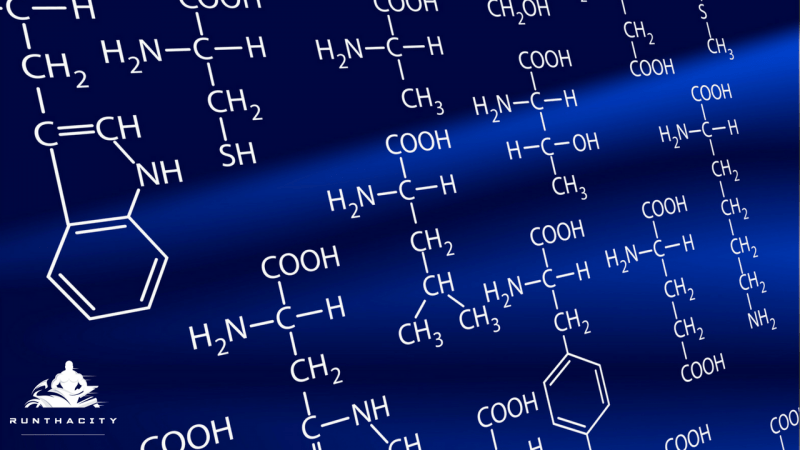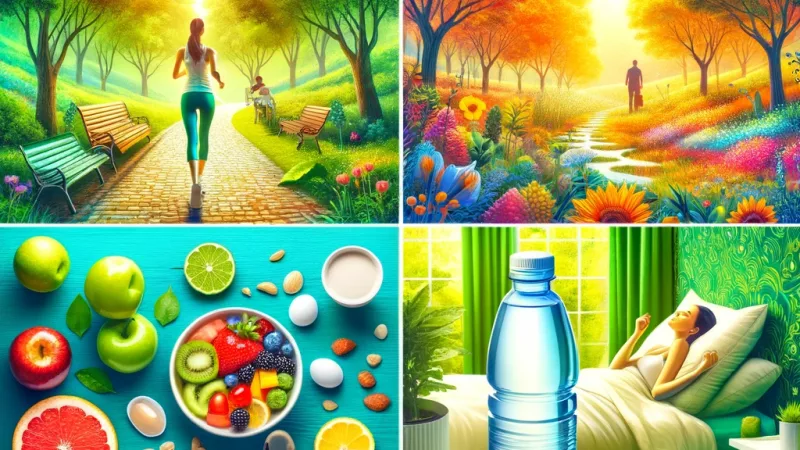Selective Androgen Receptor Modulators, also known as SARMs, might sound like something fresh out of a science fiction novel, but that’s not the case. SARMs are real, effective, and an alternative to steroids. For bodybuilders, SARMs could be the key to unlocking true muscle building potential without any of the serious side effects connected to steroid usage.
Here is everything you need to know about Selective Androgen Receptor Modulators, including what they are and why they work.
What Are SARMs?
SARMs is an acronym for Selective Androgen Receptor Modulators. A SARM is a drug that is a chemical twin to anabolic steroids. Though SARMs are thought to be new in the bodybuilding world, these drugs have been around since the 1940s. Currently, there are a few SARMs available legally on the market, such as:
- Ostarine (MK-2866 or GTx-024)
- Ligandol or Anabolicum (LGD-4033)
- LGD-3303
- Andarine (GSX-007 or S-4)
- Cardarine (GW-501516)
- Nutrobal (MK-677)
- Testolone (RAD-140)
What are those weird code names, you ask? The truth is that, while SARMs can be bought, they haven’t been approved for medical application, so no generic names have been affixed to them yet. This doesn’t mean SARMs are dangerous. More on that in the next section.
Also, some of the SARMs in the list are not literal SARMs. Cardarine is a PPAR receptor agonist; and Nutrobal is a growth hormone secretagogue, which helps with the release of growth hormones.
How Do SARMs Work?
To understand how SARMs work, we need to briefly look at how hormones, namely androgens, function. Androgens are the hormones responsible for masculine qualities, like facial hair, muscles, and lower body fat levels). The best known androgen is testosterone.
The body regulates the production of androgens, because imbalances are a double-edged sword. On the positive side, the more androgens you have, the faster muscles grow. On the downside, you can suffer from acne, oily hair, cysts, elevated blood pressure, testicular atrophy, and so on. This is why steroid usage is so dangerous.
SARMs, on the other hand, only focus on muscular growth by:
- Focusing on muscle and bone, not the prostate, brain, and liver like steroids
- Avoiding the breakdown of molecules, like DHT and estrogen
- Avoiding conversion into 5-A reductase, which also converts into DHT, the cause of unwanted side effects
This means at SARMs work like growth hormones without impacting the body like an over-saturation of androgen hormones would.

What Are The Benefits of SARMs?
Whether you are a bodybuilder trying to get over a plateau, a recreational gym-goer, a fitness enthusiast, or an elite athlete, SARMs have a number of benefits that greatly outweigh more controversial methods, like steroids.
SARMs can:
- Increase lean body mass
- Prevent muscle loss (catabolism) during cutting
- Accelerate rehabilitation after injuries
- Decrease recovery time
- Increase fat loss
- Increase muscular endurance
- Decrease overall fatigue
- Regulate your libido
- Be used safely by females
SARMs are better than steroids for the following reasons:
- Orally taken, not injected
- No liver toxicity from methylated compounds
- Doesn’t change to dihydrotestosterone (DHT)
- Doesn’t change to estrogen
- Doesn’t inhibit HPTA or cause a reduction in LH or FSH (hormones)
- Completely legal
- Virtually undetectable
Another benefit to SARMs is that the side effects are minimal. You rarely have to worry about negative effects. However, you should always do your research on the brand of SARM you want to use to make sure no negative side effects, like suppressed testosterone, have been reported. Don’t use SARM S-23 for this very reason.
How To Use SARMs
SARMs can be used several ways, depending on your goals. Bulking, cutting, and weight loss cycles can all benefit. Most SARM formulas come in triple stacks, since many of the compounds are multi-faceted and have a synergistic relationship with one another.
For example, if you want to bulk with SARMs, you might use andarine, ostabolic (ostarine) and testolone for 12 weeks. The typical dose is 10-25 mgs a day of each SARM. You should never go above 25 milligrams per dose.
For cutting, use andarine (S-4), which has fat burning effects.
To gain strength, andarine (S-4), anabolicum (LGD), and cardarine (GW) are a triple stack that works well for recomposition. Again, the usual dosage is 12 weeks. Then, you taper off.
In short, SARMs are growing in popularity with the bodybuilding community, because this supplement has shown an ability to accelerate anabolism in muscles, prevent catabolism, accelerate recovery, and are much safer than steroids. If you’re looking for a change or want to unleash the potential of your muscles, SARMs are worth a try.
Have thoughts on SARMs? Share your thoughts!
Did you enjoy this article about SARMs? Then head over to my YouTube channel, where you can informative videos that cover bodybuilding-related topics like this one.
You Might also like
-
What Is Amino Acid Therapy?
Amino Acid Therapy for Cerebral Palsy
The contribution in the development of cerebral palsy focuses on potentially modifiable factors during the neonatal period. Studies revealed that it has something to do with the excitable protein building blocks and their role in neurological injury.
In preventing the permanent deficit of having cerebral palsy, amino acid therapy is a method of treating brain damage and early abnormality. This was created by Professor Alexander Khokhlov from Russia who is teaching biochemistry and nuerology. He also has other clinics in Cyrpus, Czech Republic, London and New Zealand.
This consists of the intravenous administration of one or more essential protein building blocks. It was performed on 84 patients that went through treatment from February 1994 to February 1996. About 39 received two courses, 20 had three sessions, 9 took four, 9 received five courses, 6 had six sessions and 1 took seven. Accordingly, a percentage of more than 50 patients were given 3 or more courses.
Amino Acid Therapy for Psychological Condition
Neurotransmitters are important chemical messengers which regulate functions in the brain, muscles, organs and nerves. Serotonin, dopamine, neropinephrine and epinephrine are the most common of its type.
People that have the neurotransmitter deficiency can have the following conditions depression, chronic fatigue, insomnia, attention deficit, anxiety, panic attacks and many more. With the application of the amino acid therapy it has helped those who are agonizing such situations. Treatments include taking SSRI or selective serotonin re- uptake inhibitors and other prescribed drugs such as Prozac, Zoloft, Effexor, Celexa or Wellbutrin.
It functions by artificially accelerating the amount of serotonin in the synapse of the nerve. This allows a temporary recovery in the chemical messaging system. The downside however, is that it does not increase serotonin levels and diminishes the stocks of NT. It happens because the SSRI class drugs bring about an augment in an enzyme called MAO.
Amino Acid Therapy for Cancer
Developed by Angelo John, a cancer scientist, he researched the role of the protein block- builders in the cancer cells. Afterwhich, he determined how it can be altered to eliminate to cause its death. Thus, his objective is to strategically and scientifically utilize the chemical reactions and supplemental responses by interfering with the five basic prerequisites namely structure, blood vessels, energy, growth hormones and functions.
Amino acid therapy works synergistically with both chemotherapy and radiotherapy. It hinders the rise of tumors and causes them to retreat. It is a six to eight month course administered to under the care of your doctor and just inside the comforts of your home.
There was a study done by Dr. Marco Rabinovitz of the National Cancer Institute where it showed that deprivation of the protein block- builders is beneficial in healing cancer. Such is an example that consists of scintifically formulated amino acids. In the otherhand, Dr. Chi Van Dang of John Hopkins School of Medicine stated that cancer cells are sugar junkies that if robbed of glucose, they will eventually pass away.
-
Start Achieving Lasting Health and Happiness Now
Living a healthy lifestyle is not just about exercising and eating right. While those elements are important, living a healthy lifestyle is also about making small, consistent changes to your daily routine that can have a significant impact on your physical and mental well-being. Incorporating simple habits into your daily life can go a long way in boosting your health, and the good news is that it’s easier than you might think. In this blog post from RunThaCity.com, we explore everyday strategies that you can adopt to improve your overall health and well-being.Start Achieving Lasting Health and Happiness Now
Plan Walking Breaks Throughout Your Day
Sitting for extended periods can have a detrimental impact on your health. It can affect your posture, blood circulation, and overall energy levels. Taking short walks throughout the day can help alleviate these problems. You can take a walk during your lunch break, make it a habit to stand up and stretch every hour, or take the stairs instead of the elevator. If you want to take a longer walk, consult a walk score map to find the best walking spots nearby. Regular physical activity can help you maintain a healthy weight, lower your risk of chronic diseases, and improve your mental health.Start Your Day With Breakfast
Making breakfast a daily habit is an excellent way to kick-start your metabolism and provide your body with the energy it needs to face the day. Consuming a nutritious breakfast can help enhance cognitive function, improve your mood and reduce your risk of overeating throughout the day. Make sure to opt for whole-grain, low-fat, and high-protein options instead of high-fat and high-calorie foods. Taking the time to prepare your breakfast instead of rushing out of the house is a form of self-care and the foundation to a great morning routine.Focus on Hydration
Staying hydrated is essential for maintaining a healthy body. Drinking water throughout the day helps regulate body temperature, remove waste, and lubricate joints. Make it a habit to drink at least 2 liters of water every day, and if you find that too difficult, try adding slices of lemon, cucumber, or mint to your water to give it some flavor. You may struggle with staying hydrated if you consume a lot of caffeine. Take time to look up the caffeine content of your favorite beverages. You may be surprised by how much you’re consuming. Remember, staying consistently hydrated can help you feel more energized, and it may also improve your skin’s appearance.SelfCaring.info
Brad, is a guest contributor for RunThaCity.com. He is passionate about empowering individuals to reach their full potential through self-care.
Brad's expertise stems from his personal journey and a genuine desire to help people flourish. He now shares his insights through [link to selfcaring.info, if available] and various guest posting opportunities.
-
Healthy foods are more important than the type of diet to reduce heart disease risk!
People usually don’t understand how dieting can negatively affect their body if they stop taking proper nutrients! You may have heard about the Keto diet after which many people are going crazy and are confirming its guaranteed results! Well, you guys should know that Keto is no doubt an interestingly effective diet, but on the other hand, we will also like you to know that it can affect your health in the long term. You certainly need the TDEE calculator to calculate your daily calorie requirements. This would be any expected energy caused by dieting. The reason is because the Keto diet increases your consumption of fats and proteins and restricts the intake of carbs and other important minerals!
Because of this very, your body becomes very weak; in fact, some people complain about their hair fall, loss of nails and constipation. These are some of the most common side effects of the Keto diet and then obviously as you know that carbs and glucose is an important part of improving your health and blood flow and it has direct effects on the heart. We understand that it is important for you to lose weight, but it is important to eat healthily and here is the solution to our problem.
Follow A Macro Counting Diet!
Now if you are unfamiliar with the term macros, then you should know that macro actually stands for the macronutrients that are needed by your body. Now we would like you guys to know that the macronutrients are actually known as the most calorie providing foods to your body. To state the importance of the macronutrients, we will like you to know that these are the nutrients that are needed by our body to exist and to function properly and actively Without the proper intake of these nutrients, your body will collapse!
Now, these nutrients consist of three components, and these are better known by their common names carbohydrates, fats, and proteins! Now you should know that your body needs a specific amount of calorie intake depending on our age and the shape and size of our body. Please understand that if you simply regulate the calorie intake, then you can get rid of the extra weight with minimal effort.
Now here is the proper way of calculating macronutrients!
Macro Calculator!
Now the free macro calculator tool that is available on the web today is one of the most efficient tools that you can use to calculate my macros! With the help of the macro calculator, you can easily add the food you are planning on eating and can get the macros for weight loss! With the help of the macro calculator tool, you can easily adjust the diet and only use the macros safe for weight loss! He macronutrient calculator is also available on the app store of your mobile!










